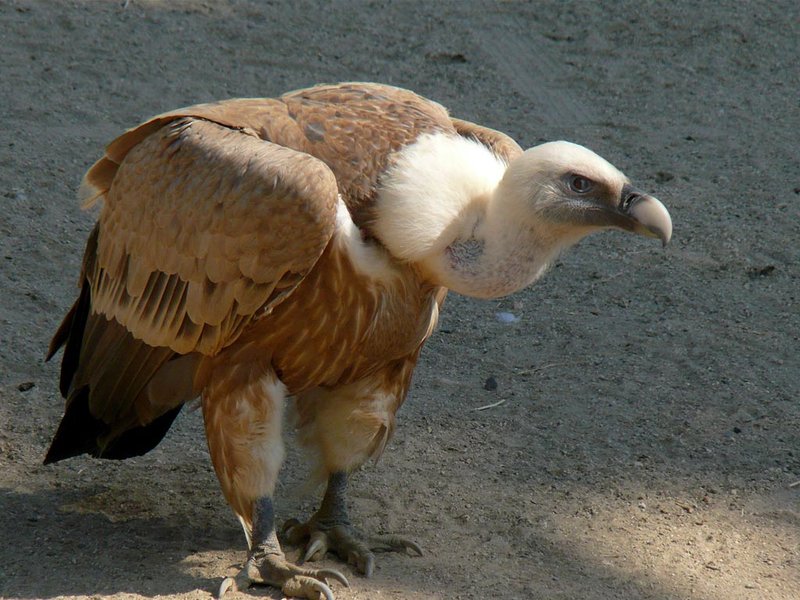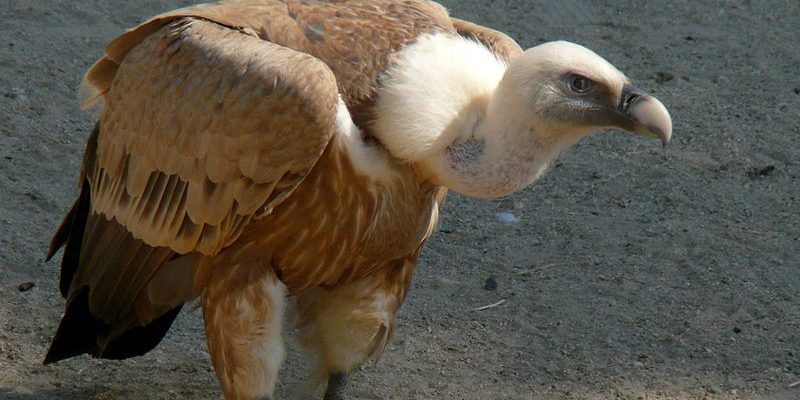
Think of the Griffon Vulture as nature’s cleanup crew. They play a critical role in the ecosystem by helping to decompose dead animals. But there’s a lot more behind those big wings and sharp beaks. So, let’s dive into ten interesting things about the Griffon Vulture that you might not know, from their incredible flying skills to their unique social behaviors.
1. They Have Impressive Wingspans
One of the first things you’ll notice about the Griffon Vulture is its size. These birds boast a wingspan of up to nine feet! That’s nearly as wide as a small car! This massive wingspan enables them to soar effortlessly through the skies, conserving energy as they glide on thermal updrafts.
It’s fascinating to think about how they can stay airborne for hours without flapping their wings much at all. Imagine stretching out on a comfy couch for a long afternoon of relaxation. That’s basically what these vultures are doing in the air. Their lightweight bodies and strong wings make them experts at sparing energy while seeking out food over vast landscapes.
2. An Eye for Opportunity: Their Vision is Exceptional
Griffon Vultures are equipped with incredible eyesight. They can spot a potential meal from miles away, thanks to their keen vision. It’s almost like they have the best binoculars built right into their heads! This ability allows them to locate carrion across rugged terrains, making them incredibly efficient scavengers.
But here’s the thing: their eyesight isn’t just good; it’s *really* good. While humans see about 20/20, vultures can see much better, which helps them spot food and avoid danger. You might imagine them as hawks or eagles when scanning the ground from the sky.
3. They’re Social Birds
Griffon Vultures are not loners; they thrive in social settings. Often, you’ll find them hanging out in large groups, known as “venues.” This social behavior is essential for finding food. When one vulture spots a meal, it quickly calls to others, almost like sending out a group text to all its friends.
This teamwork is crucial, especially when it comes to feeding. Multiple vultures can help tear apart a carcass more efficiently, ensuring everyone gets a share. Picture a barbecue with friends—everyone pitches in to make sure there’s enough for all!
4. Nesting Habits: High Places for a Good Home
Griffon Vultures have unique nesting habits. They typically prefer high cliffs or steep rock faces for their nests. This choice helps protect them from predators and gives them a great view of the surrounding environment.
The nests themselves are made from twigs and other materials, and they often build them in hard-to-reach places. Think of them as the ultimate homebodies, choosing the most secure locations possible. Once in a while, you might even find them using the same nest year after year, adding more materials over time—like decorating a home for the holidays!
5. Their Diet: More than Just Dead Animals
While it’s true that Griffon Vultures primarily eat carrion, their diet can be varied. They feast on the remains of animals such as deer, cattle, and sheep. But here’s a fun fact: they don’t mind a bit of competition! Sometimes they’ll even share a meal with other scavengers like wolves or foxes.
This behavior is vital for maintaining a balanced ecosystem. By consuming decaying animals, they help prevent the spread of disease. You might think of them as nature’s garbage disposal—cleaning up what we can’t see!
6. They Communicate in Unique Ways
Griffon Vultures communicate with each other using a variety of vocalizations and body language. While they may not chirp melodiously, they do have a range of grunts, hisses, and croaks. Think of it as their own private language, allowing them to convey different messages to one another.
Body language plays a significant role in their communication too. When they’re around other vultures, you’ll see them puffing up their feathers or extending their wings. This kind of behavior can signal dominance or attraction. So, in a way, they have their version of a “bird dance party.”
7. They Have a Unique Breeding Cycle
When it’s time to mate, Griffon Vultures aren’t your typical birds. They become quite the romantic pair! They usually mate for life and perform elaborate courtship displays to attract a partner. This often includes soaring together in the sky and engaging in aerial acrobatics.
Once they choose a mate, they can take quite some time to breed. It often takes a pair of vultures up to five years before they successfully produce eggs. It’s like they’re saying, “Let’s take our time and get this right!” Once they do have eggs, both parents share the responsibility of incubating them and caring for the young.
8. Conservation Status: Facing Challenges
While the Griffon Vulture has a fascinating life, they face several threats. Habitat destruction, poisoning, and hunting have led to declining populations across many regions. These challenges mean that conservation efforts are crucial to help maintain their numbers.
There are ongoing initiatives to protect their habitats and raise awareness about their ecological importance. It’s almost like being a superhero, tasked with defending not just their kind, but the environment as well.
9. Lifespan: Long-lived Birds
Griffon Vultures are known for their impressive lifespans, often living up to 30 years or more in the wild. That’s pretty remarkable, right? This longevity allows them to spend many years enjoying the skies and playing their vital role in the ecosystem.
It’s interesting to think about how these birds witness changing landscapes, migrations, and even shifts in weather patterns throughout their long lives. You could say they have stories to share; they’re the wise old souls of the bird world.
10. Their Role in Folklore and Culture
Finally, Griffon Vultures have found their way into various cultures and folklore throughout history. In some traditions, they’re viewed as symbols of death and rebirth. In others, they represent wisdom and the power of transformation.
This rich cultural heritage reflects how humans have seen these birds across time. It’s fascinating how a creature that many might overlook has such a deep impact on mythology and storytelling.
As you can see, the Griffon Vulture is a captivating bird with many layers to its existence. They may primarily feed on what’s left behind, but their role in nature is anything but insignificant. Next time you spot one soaring overhead, remember there’s much more to this magnificent bird than meets the eye. They’re not just scavengers; they’re essential players in our ecosystem, carrying stories and secrets high above our heads.

